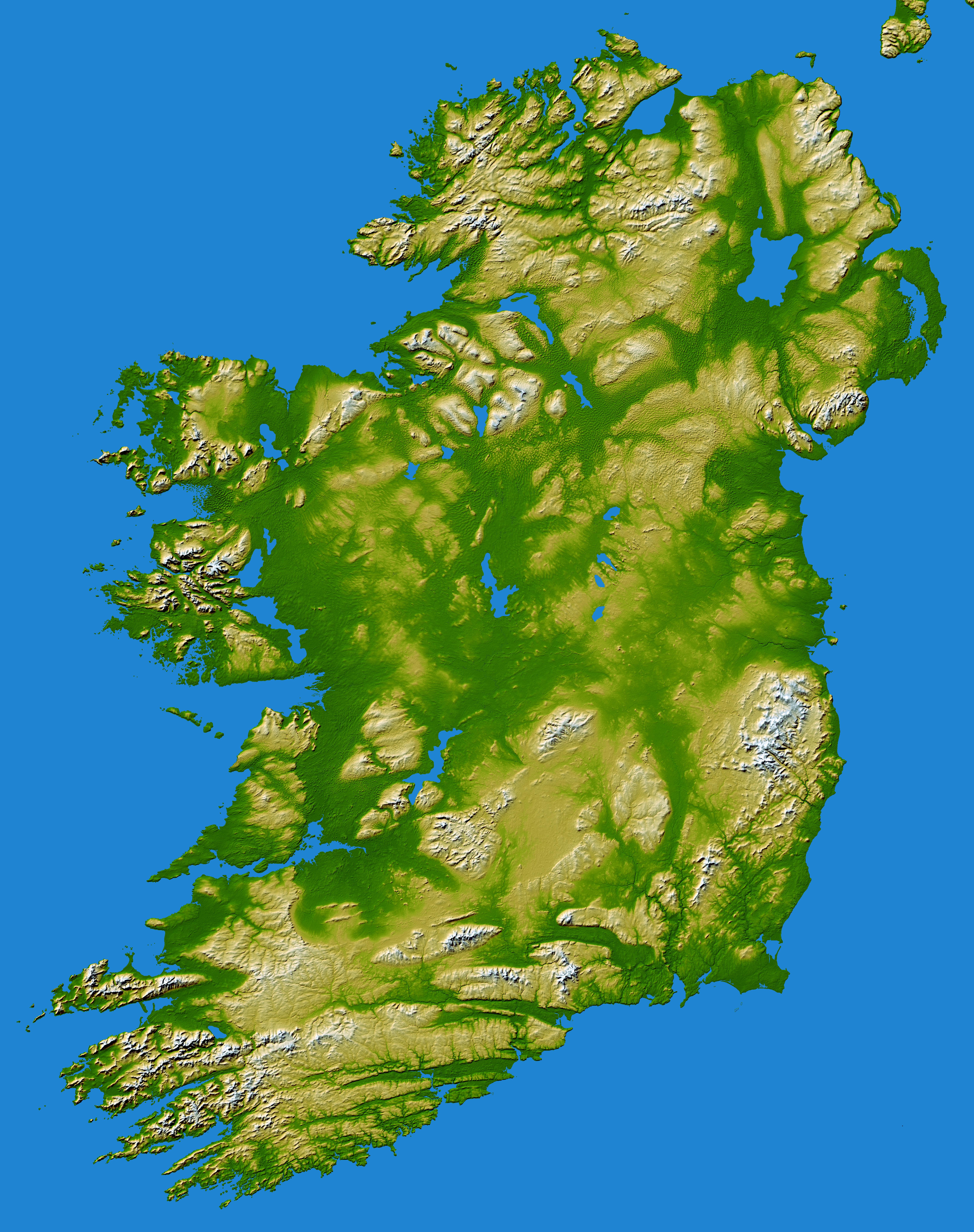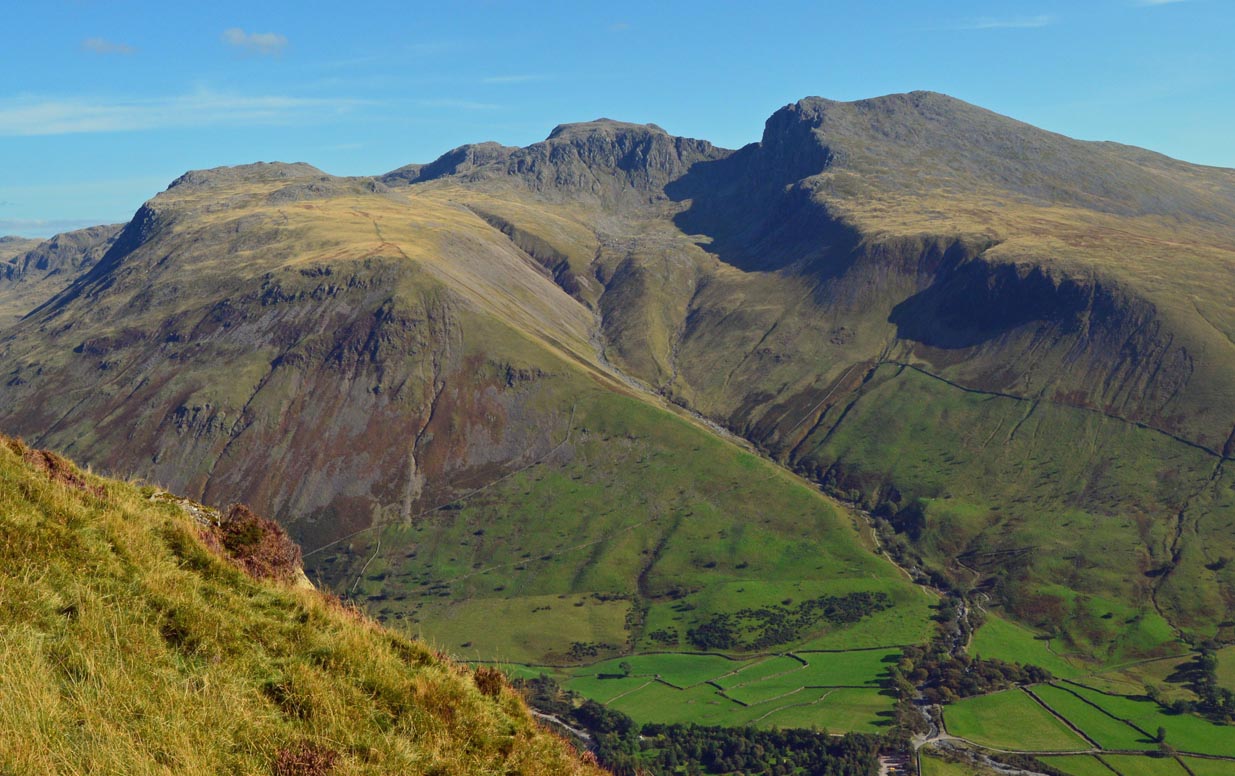|
Camenabologue
Camenabologue () at , is the 55th–highest peak in Ireland on the Arderin scale, and the 71st–highest peak on the Vandeleur-Lynam scale.Mountainviews, (September 2013), "A Guide to Ireland's Mountain Summits: The Vandeleur-Lynams & the Arderins", Collins Books, Cork, Camenabologue is situated in the southern section of the Wicklow Mountains, and has a subsidiary summit, Camenabologue SE Top . Camenabologue forms a horseshoe on a "boggy" massif, at the head of Glenmalure, with its neighbours, that include Table Mountain , and Conavalla . Camenabologue also sits on the main "central spine" of the Wicklow mountains and links to the larger massif of Lugnaquilla , which lies at the southern terminus of the whole range. Camenabologue's prominence of does not qualify it as a Marilyn, but it does rank it as the 31st-highest mountain in Ireland on the MountainViews Online Database, '' 100 Highest Irish Mountains'', where the minimum prominence threshold is 100 metres. Bibliograp ... [...More Info...] [...Related Items...] OR: [Wikipedia] [Google] [Baidu] |
Lists Of Mountains In Ireland
In these lists of mountains in Ireland, those within Northern Ireland, or on the Republic of Ireland – United Kingdom border, are marked with an asterisk, while the rest are within the Republic of Ireland. Where mountains are ranked by height, the definition of the topographical prominence used to classify the mountain (e.g. the change in elevation required between neighbouring mountains), is noted. In British definitions, a height of is required for a mountain, whereas in Ireland, a lower threshold of is sometimes advocated. The lowest minimum prominence threshold of any definition of an Irish mountain is (e.g. the Vandeleur-Lynam), however most definitions, including the International Climbing and Mountaineering Federation (UIAA) criteria, do not consider prominences below as being mountains (e.g. must at least be an Arderin or a Hewitt). Many British definitions consider a peak with a prominence below , as being a ''top'', and not a mountain (e.g. must be a Marily ... [...More Info...] [...Related Items...] OR: [Wikipedia] [Google] [Baidu] |
Table Mountain (Wicklow)
Table Mountain is a peak in the southern section of the Wicklow Mountains range in Ireland. With a prominence of only , it is only listed in a few of the recognised categories of mountains in Ireland; it is the 110th–highest peak on the Vandeleur-Lynam Irish scale.Mountainviews, (September 2013), "A Guide to Ireland's Mountain Summits: The Vandeleur-Lynams & the Arderins", Collins Books, Cork, Table Mountain is at the apex of a horseshoe-shaped "boggy" massif with its larger neighbours, Camenabologue and Conavalla that sit at the head of the Glenmalure valley; all three peaks lie close to the "central spine" of the range as it runs from Kippure in the north, to Lugnaquillia in the south. There is no recorded Irish language name for Table Mountain, and it has no connection with Table Mountain in Cape Town, South Africa. __NOTOC__ Bibliography * * * See also * Wicklow Way *Wicklow Mountains *Lists of mountains in Ireland *List of mountains of the British Isles by heigh ... [...More Info...] [...Related Items...] OR: [Wikipedia] [Google] [Baidu] |
Hewitt (hill)
This is a list of Hewitt mountains in England, Wales and Ireland by height. Hewitts are defined as "Hills in England, Wales and Ireland over two thousand" feet in height, the general requirement to be called a "mountain" in the British Isles, and with a prominence above ; a mix of imperial and metric thresholds. The Hewitt classification was suggested by Alan Dawson in his 1992 book, "The Relative Hills of Britain". Dawson originally called his Hewitts "Sweats", from "Summits - Wales and England Above Two thousand", before settling on the label Hewitt. In a series of three booklets edited by Dave Hewitt, the list of English Hewitts was published in 1997, and the list of Welsh Hewitts was also published in 1997, and the list of Irish Hewitts was published in 1998. Hewitts were designed to address one of the criticisms of the 1990 Nuttall classification, by requiring hills to have a relative height of , a threshold that the UIAA had set down in 1994 for an "independen ... [...More Info...] [...Related Items...] OR: [Wikipedia] [Google] [Baidu] |
Lugnaquilla
LugnaquillaLugnaquilla . Placenames Database of Ireland. (), at , is the 11th–highest peak in Ireland on the Lists of mountains in Ireland#Arderins, Arderin list, and 13th–highest on the Lists of mountains in Ireland#Vandeleur-Lynams, Vandeleur-Lynam list, and the highest Irish mountain outside of County Kerry, Kerry.Mountainviews, (September 2013), "A Guide to Ireland's Mountain Summits: The Vandeleur-Lynams & the Arderins", Collins Books, Cork, Lugnaquilla is the List of Irish counties by highest point, highest point in County Wicklow, Wicklow, and in the province of Leinster. Lugnaquilla is in the Wicklow Mountains, and overlooks the Glen of Imaal to the west and Glenmalure to the east. Naming Irish academic Paul Tempan wrote in h ...[...More Info...] [...Related Items...] OR: [Wikipedia] [Google] [Baidu] |
Wicklow Round
The Wicklow Round is a long-distance hill running Fell running, also sometimes known as hill running, is the sport of running and racing, off-road, over upland country where the gradient climbed is a significant component of the difficulty. The name arises from the origins of the English sport o ... challenge in the Wicklow Mountains in Ireland. The route follows a proscribed 100-kilometre circuit of 26 mountains, which must be completed in a fixed order, that total over of elevation; there is some flexibility on route-choices between peaks. Rounds completed outside of a cut-off time of 24-hours are not generally recorded. Irish ultra-runner Joe Lalor is credited with the creation of the Round. The first person to complete the Round was Moire O’Sullivan, in a time of 22:58:30 on 29 May 2008; O'Sullivan went on to write a book about her experience on the Round called ''Mud, Sweat, and Tears''. Eoin Keith set a new record of 17:53:45 on 30 May 2009, which stood for nine y ... [...More Info...] [...Related Items...] OR: [Wikipedia] [Google] [Baidu] |
Glenmalure
Glenmalure () is a 20-kilometre long U-shaped glacial valley in the Wicklow Mountains in Ireland. Glenmalure is an important base for climbing in the Wicklow mountains, and particularly accessing the massif of Lugnaquilla, and contains one of the earliest An Óige youth hostels in Ireland. Glenmalure was also an important historical area and the site of the Battle of Glenmalure in 1580, as well as various events in the Irish Rebellion of 1798. Geography Glenmalure is a 20-kilometre long glacial valley in the southern sector of the Wicklow Mountains and is one of the longest glacial valleys in Ireland. A number of adjoining hanging valleys, most notably the Fraughan Rock Glen, feed into Glenmalure valley, which was formed by feeder glaciers in the last ice age. The valley runs from the northwest down to the southeast. Its western flank is dominated by the large massif of Lugnaquilla , the County Top for Wicklow, and the Provincial Top for Leinster. The steep walls of its e ... [...More Info...] [...Related Items...] OR: [Wikipedia] [Google] [Baidu] |
Conavalla
Conavalla () at , is the 69th–highest peak in Ireland on the Arderin scale, and the 85th–highest peak on the Vandeleur-Lynam scale.Mountainviews, (September 2013), "A Guide to Ireland's Mountain Summits: The Vandeleur-Lynams & the Arderins", Collins Books, Cork, The summit of Conavalla sits just off the main "central spine" of the Wicklow mountains range in Ireland, as it runs from Kippure in the north, to Lugnaquillia in the south. Conavalla's large massif to the north-east is described as a "wet and boggy barren plain" whose various shoulders dominate the head of the Glendalough valley, and the upper east-side of the Glenmalure valley. Naming Irish academic Paul Tempan notes that the "pass" element of Conavalla's name likely refers to the various routes from the Blessington lakes area (e.g. the R756 road to the Wicklow Gap) in the west that crossed parts of Conavalla's boggy massif to get into the Glenmalure valley in the east (note that the Wicklow Gap can be used t ... [...More Info...] [...Related Items...] OR: [Wikipedia] [Google] [Baidu] |
Mountains And Hills Of County Wicklow
A mountain is an elevated portion of the Earth's crust, generally with steep sides that show significant exposed bedrock. Although definitions vary, a mountain may differ from a plateau in having a limited summit area, and is usually higher than a hill, typically rising at least 300 metres (1,000 feet) above the surrounding land. A few mountains are isolated summits, but most occur in mountain ranges. Mountains are formed through tectonic forces, erosion, or volcanism, which act on time scales of up to tens of millions of years. Once mountain building ceases, mountains are slowly leveled through the action of weathering, through slumping and other forms of mass wasting, as well as through erosion by rivers and glaciers. High elevations on mountains produce colder climates than at sea level at similar latitude. These colder climates strongly affect the ecosystems of mountains: different elevations have different plants and animals. Because of the less hospitable terrain and ... [...More Info...] [...Related Items...] OR: [Wikipedia] [Google] [Baidu] |
DoBIH
The mountains and hills of the British Isles are categorised into various lists based on different combinations of elevation, prominence, and other criteria such as isolation. These lists are used for peak bagging, whereby hillwalkers attempt to reach all the summits on a given list, the oldest being the 282 Munros in Scotland, created in 1891. A height above 2,000 ft, or more latterly 610 m, is considered necessary to be classified as a mountain – as opposed to a hill – in the British Isles. With the exception of Munros, all the lists require a prominence above . A prominence of between (e.g. some Nuttalls and Vandeleur-Lynams), does not meet the International Climbing and Mountaineering Federation (UIAA) definition of an "independent peak", which is a threshold over . Most lists consider a prominence between as a "top" (e.g. many Hewitts and Simms). Marilyns, meanwhile, have a prominence above , with no additional height threshold. They range from small hill ... [...More Info...] [...Related Items...] OR: [Wikipedia] [Google] [Baidu] |

.jpg)


